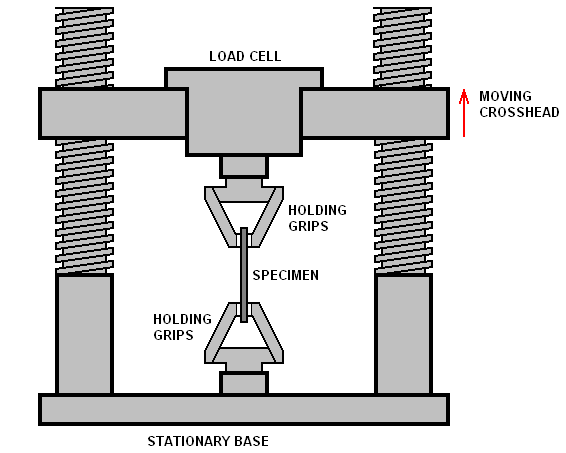The stress-strain diagram, representing the relation between stress and strain in a given material is an important characteristic of the material. To obtain the stress-strain diagram of a material, a tensile test may be conducted using a specimen of the material. The cross-sectional area located near the middle of the specimen is accurately determined. Two gage marks are inscribed near the middle portion at a distance L0 from each other as shown in the second figure below. The distance L0 is the gage length of the specimen.


The standard tensile test is used to obtain a variety of material characteristics and strengths that are used in design. Test specimens can be either flat or cylindrical, depending on the type of machine. The original diameter, or width, and the original gauge length are recorded before the test is begun, and are used to measure the deflections. The specimen, once loaded in the test machine, is slowly loaded in tension while the load and deflection are measured.
The deflection, or extension of the gage length, is given by L − L0, where L is the gauge length corresponding to the load. The normal strain can then be calculated.
The data obtained from the test can be used to generate a stress-strain diagram.

